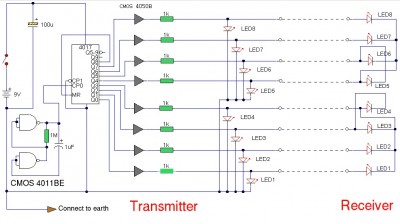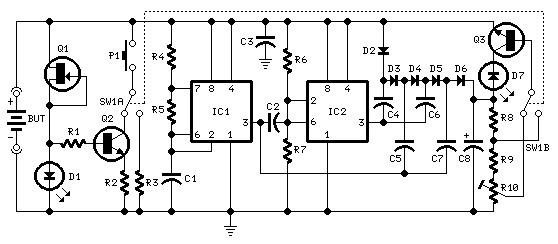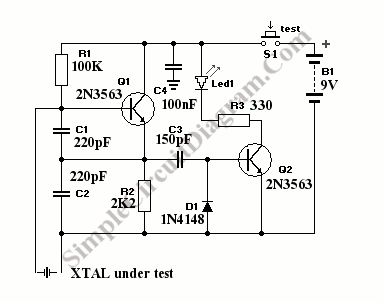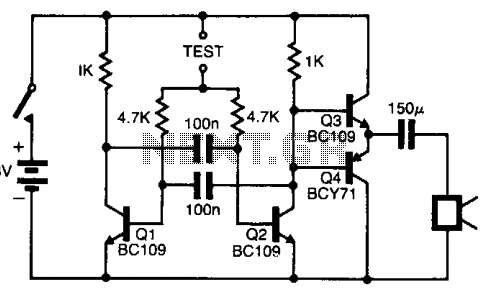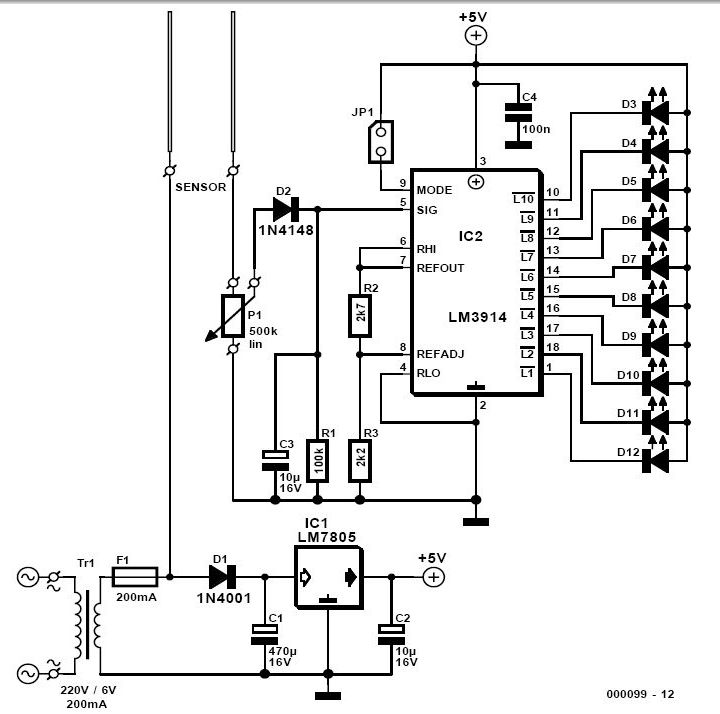
Continuity And Component Tester
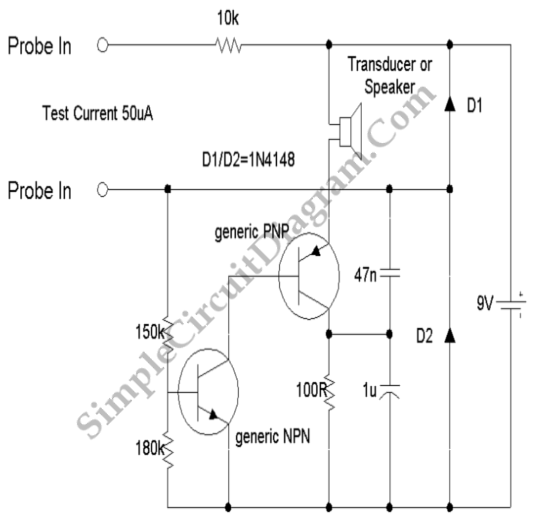
This continuity tester emits a beep sound when it detects electrical current conduction between its probes. Below is the schematic diagram of this audible device.
The continuity tester is a simple yet effective tool used to check the integrity of electrical connections and circuits. The primary function of this device is to provide an audible indication when a closed circuit is detected, signaling that current can flow between the two probes. The schematic diagram typically includes a power source, such as a battery, a resistor, a diode, and a piezoelectric buzzer or speaker to produce the sound.
In the schematic, the battery serves as the power supply, providing the necessary voltage to the circuit. The probes are connected to the circuit, and when they touch a conductive path, an electric current flows through the circuit. This current passes through a resistor, which limits the current to a safe level for the buzzer.
The diode may be included to protect the circuit from reverse polarity, ensuring that the current only flows in one direction. When the probes are connected, the current activates the piezoelectric buzzer, producing a beep sound that indicates continuity.
The design of the continuity tester is straightforward, making it accessible for both professional and amateur electronics enthusiasts. The components can be easily sourced, and the circuit can be assembled on a breadboard or printed circuit board (PCB) for more permanent applications.
This device is essential in various applications, including troubleshooting electrical systems, verifying connections in wiring, and ensuring that circuit paths are complete before powering up devices. Overall, the continuity tester is a valuable tool in the field of electronics, providing immediate feedback on circuit integrity.This continuity tester gives a beep sound if detect an electric current conduction between its probes. Here is the schematic diagram of this audible.. 🔗 External reference
The continuity tester is a simple yet effective tool used to check the integrity of electrical connections and circuits. The primary function of this device is to provide an audible indication when a closed circuit is detected, signaling that current can flow between the two probes. The schematic diagram typically includes a power source, such as a battery, a resistor, a diode, and a piezoelectric buzzer or speaker to produce the sound.
In the schematic, the battery serves as the power supply, providing the necessary voltage to the circuit. The probes are connected to the circuit, and when they touch a conductive path, an electric current flows through the circuit. This current passes through a resistor, which limits the current to a safe level for the buzzer.
The diode may be included to protect the circuit from reverse polarity, ensuring that the current only flows in one direction. When the probes are connected, the current activates the piezoelectric buzzer, producing a beep sound that indicates continuity.
The design of the continuity tester is straightforward, making it accessible for both professional and amateur electronics enthusiasts. The components can be easily sourced, and the circuit can be assembled on a breadboard or printed circuit board (PCB) for more permanent applications.
This device is essential in various applications, including troubleshooting electrical systems, verifying connections in wiring, and ensuring that circuit paths are complete before powering up devices. Overall, the continuity tester is a valuable tool in the field of electronics, providing immediate feedback on circuit integrity.This continuity tester gives a beep sound if detect an electric current conduction between its probes. Here is the schematic diagram of this audible.. 🔗 External reference
